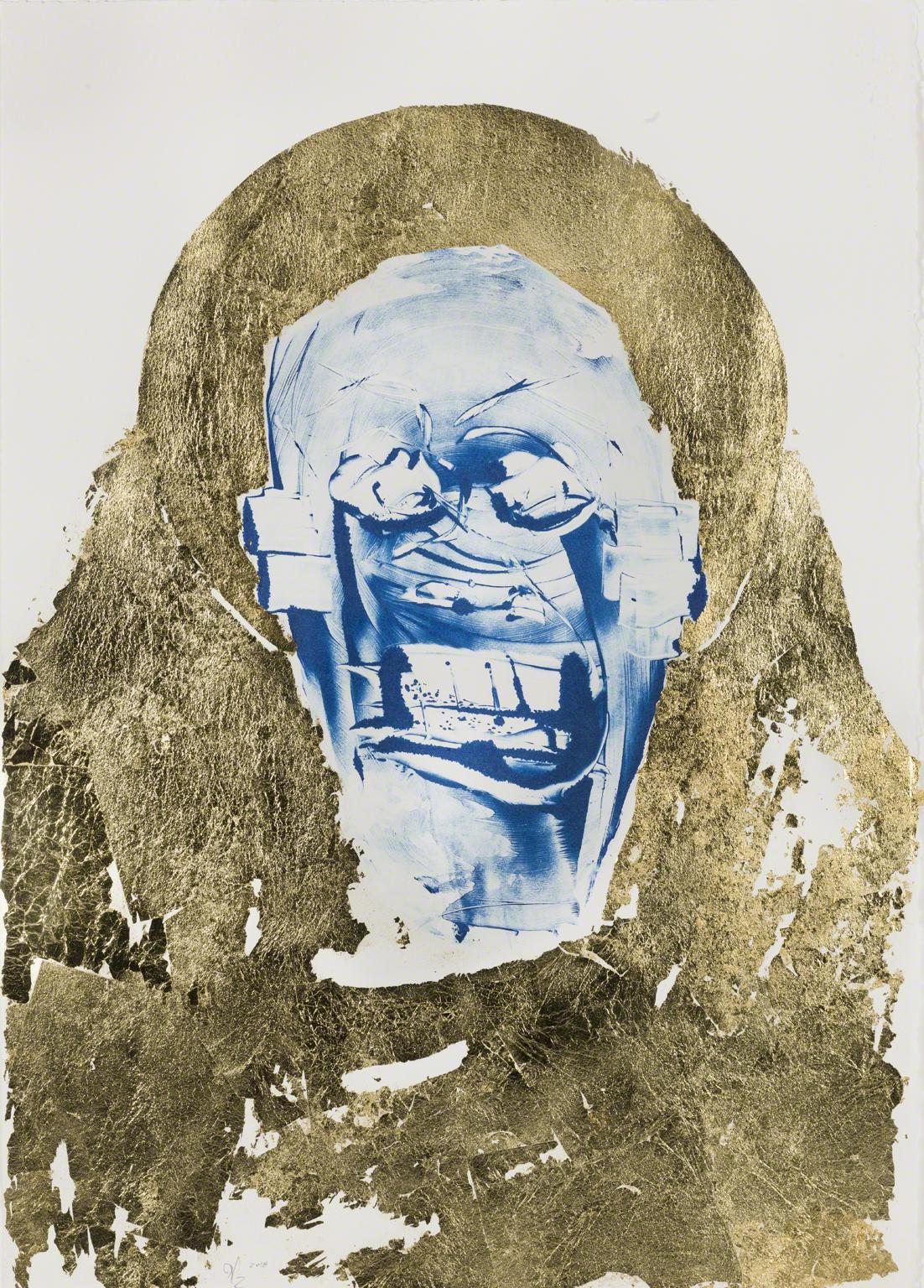Let Them Enter Dancing and Showing Their Faces: Thief
Nicholas Galanin ( 2018 )

Nicholas Galanin is a Tlingit/Unangax multimedia artist whose work explores the intersections of history, Tlingit culture and tradition, and his experience of navigating contemporary America as a Native American person. His series of monoprints Let Them Enter Dancing and Showing Their Faces, which he describes as “dance-informed prints,” draws on the Tlingit entrance dance, where dancers reveal their faces instead of wearing masks. By invoking this tradition, Galanin emphasizes a form of cultural expression that is embodied, passed down through generations, and which involves movement, music, and ritual.
Each monoprint in this series depicts a face—what Galanin describes as “the faces within the society we dance in.” These figures are not necessarily dancers, but rather symbolic characters representing the diverse personas encountered in cultural, social, and political spaces. Through characters like the “thief,” the “shaman,” “knowledge,” and “fortitude,” the artist explores the complex ways in which individuals navigate the social world.
In one of these prints—subtitled “Thief”—Galanin creates a haunting face with hollow, wide-open eyes and a gaping mouth that seems to simultaneously express a smile, pain, anger, or even the grim image of a skull. The ink, applied with speed, distorts the features, and, where it gathers around the mouth, creates spurts suggesting blood or saliva. Surrounding the face, the gold leaf resembles a halo or veil, drawing on Western religious iconography and complicating the status of this figure. This use of gold, a material historically linked to wealth, power, and colonial expansion, taps into the complex legacy of US imperialism and the displacement of Native American peoples. By invoking these symbols and history, Galanin highlights the many paradoxes of navigating spaces with conflicting value systems, exposing the tensions between cultural expression, belief systems, and power structures.
Text by Tie Jojima as part of the Out of Many research project.